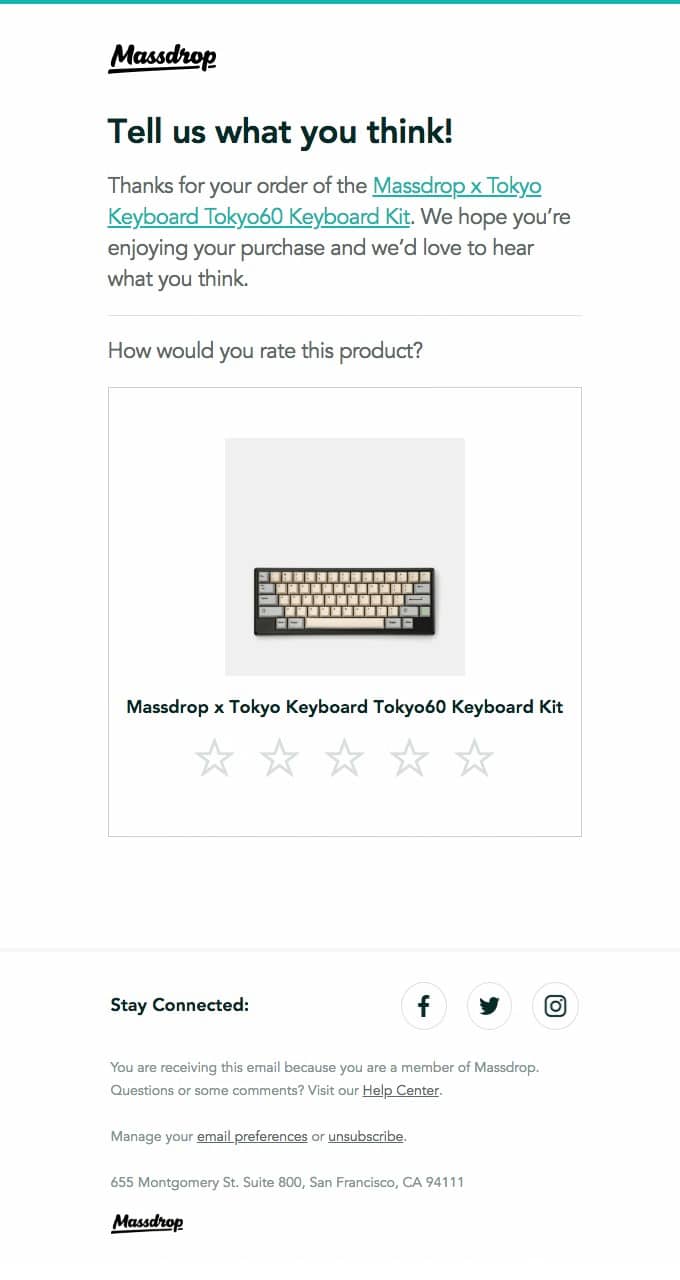In a cut-throat world of competition, receiving feedback from your customers is imperative to bring in new business. Understanding where you stand in your customer’s eyes not only helps improve your marketing strategies, but also improves customer service, product development, and more.
While analytics and data are always important, sometimes it’s best to hear directly from your customers to understand the reasons behind their actions.
By combining the power of customer feedback with analytics, you’re able to see a bigger picture of what’s actually going on, how to fix any issues, and develop future opportunities.
Let’s look into what the types of customer feedback are and how to implement them into your marketing strategy.
What is feedback?
Customer feedback is feedback from your customers about your business, products, sales process, and more. There are many ways to receive such feedback, like:
-
- Email surveys and incentives
- Social media reviews
- Feedback boxes
- User activity
- Usability tests
- Reach out to the customer directly
Better understanding your customer’s overall experience with your brand will help determine your brand sentiment and get a better handle on what you can improve.
What are 3 common types of feedback?
Now that you know what feedback is, it’s time to look into the different types so you can decide what fits best for your audience. You can use our handy feedback email templates to set these up to send.
Product feedback
This feedback covers how customers talk about a company and its products. This not only tells you how customers perceive your products but also lets you monitor your reputation.
Here are a few methods to try:
- Focus groups
- Customer interviews
- Usability tests
- Customer reviews
- Customer complaints
Customer satisfaction
It shouldn’t be a surprise that customer satisfaction is a direct indicator of brand loyalty. How often do you purchase from a company with horrible customer service? Probably not often.
Eighty-nine percent of customers have stopped doing business with a brand after experiencing poor customer service.
Gauging this sentiment is critical to understanding where you can improve in the customer’s experience.
Try using these tactics:
- Incentives
- Comment boxes
- Dedicated customer service Twitter accounts
- Surveys
- Website forms
Brand loyalty
Retaining brand loyalty is crucial for providing increased ROI after product launches and marketing campaigns. This covers actions like return purchases, loyalty programs, customer service, and reputation. Here are ways to obtain this feedback:
- Surveys
- Post-purchase emails
- Website activity
- Text follow-ups
- Email preference centers
Source: Really Good Emails
How to measure feedback
Measuring feedback is crucial to determining where your brand and products stand with your customers.
The most standard metric is the Customer Satisfaction Score (CSAT), which typically ranges from 1-5 or 1-10 and is where you ask customers to rank you. Another metric is the Net Promoter Score (NPS), which measures the likeliness a customer will refer you to another person. NPS is a great way to analyze your brand loyalty.
You’ll also be able to measure feedback through social media, review responses, and overall engagement with your marketing campaigns.
Does it really matter?
Obtaining a wide range of feedback about your brand, products, and customer service is vital in understanding the customer experience. This allows you to make improvements for future customers to ensure you’re making a 5-star impression with every interaction.
What now?
Now that you know the three types of feedback and how to implement them into your marketing strategy, it’s time to start asking your customers what they truly think about you. Are you ready to get started? Check out our comprehensive guide on how to use email to receive customer feedback.
